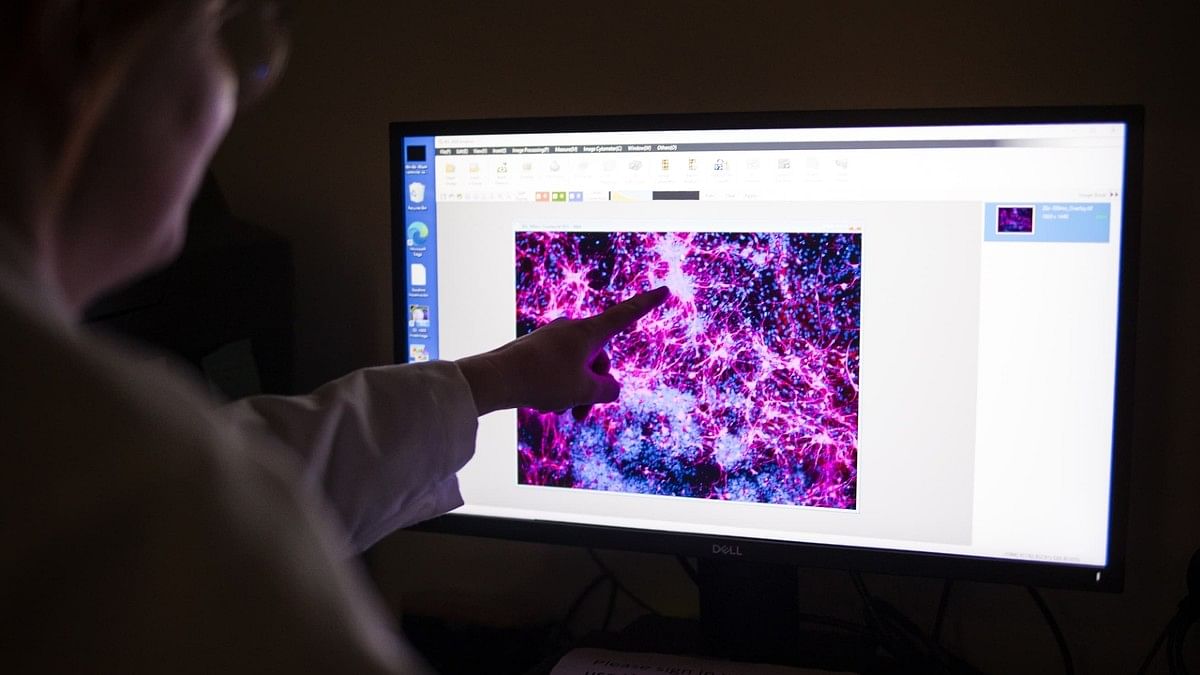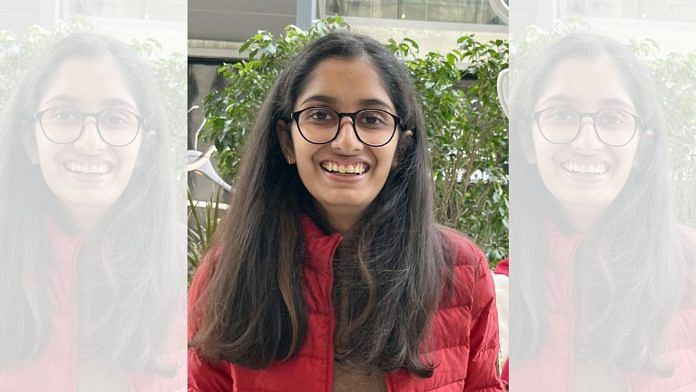Specialists at the Children’s Hospital of Philadelphia and the University of Pennsylvania in the US became the first globally to treat a baby named KJ with a customised gene-editing therapy, after diagnosing the child with a severe genetic disorder that kills about half of those affected in early infancy.
The therapy was administered using Clustered Regularly Interspaced Short Palindromic Repeats (CRISPR) technology, also referred to as “genetic scissors” that won its inventors the Nobel Prize in 2020.
KJ’s disorder, known as CPS1 deficiency, is caused by the lack of an enzyme that leads to dangerous build-up of ammonia because of the natural breakdown of protein from food, and can cause severe damage to the liver and brain, among other vital organs.
The latest breakthrough involved scientists identifying specific mutations causing the disease, designing a gene editing therapy to correct them, and testing the treatment and nanoparticles specially created to deliver the treatment to the liver. The procedure, named base editing, allows the alteration of DNA or molecular instructions.

Their ground-breaking work was published in on 15 May. The feat is being celebrated worldwide as it demonstrates the treatment’s potential of fixing many life-threatening genetic diseases by rewriting faulty DNA.
“Some years ago, all this would have been in the realm of science fiction, but today it is reality and I am very happy,” molecular biologist Dr Debjyoti Chakraborty, who is running multiple research projects using CRISPR technology in India, told ThePrint. Associated with the New Delhi-based Centre for Scientific and Industrial Research in India-Institute of Genomics and Integrative Biology (CSIR-IGIB), Chakraborty was leading a project to develop a similar treatment for Uditi from 2022. “This news, however, has also brought a feeling of disappointment as time ran out in our case,” said the scientist.
In 2023, when Uditi passed away, scientists leading India’s two leading gene therapy laboratories—one at CSIR-IGIB and the other at Narayana Nethralaya in Bengaluru—were nearly ready with an experimental treatment using base gene editing specifically designed for Uditi.
The Sarafs were funding the research to develop the world’s first personalised treatment in India, using cutting-edge therapy, in a desperate bid to save their daughter.
Uditi was suffering from an extremely rare neurogenetic condition called FENIB or familial encephalopathy with neuroserpin inclusion bodies. She was 20 when she passed away in October 2023.
FENIB is a fatal neurodegenerative disease primarily caused by the aggregation of mutant neuroserpin proteins, which disrupt the functions of neurons within brain cells, leading to progressive dementia, seizures and, eventually, death. This condition usually manifests in those affected between the second to fifth decades of life, and in some, the progression is rapid. It is mostly misdiagnosed due to difficulties in connecting it to the genetic root.
There is no treatment available to treat the condition.
Uditi, a normal child until nine, was first diagnosed as an epilepsy patient in 2011. Investigations over several years later confirmed she had the rare condition due to a faulty gene. The Sarafs, who were witnessing Uditi’s gradual deterioration, first took her to the US and reached out to top genomic scientists to get a treatment tailor-made for her.
“She was a bright child early on, but as her condition progressed, she started lagging behind in studies. We first enrolled her in a special school in Gurugram but later decided to take her to the US for both treatment and education,” Sonam said.
The couple approached top genomic scientists and epilepsy specialists in the US after coming across news about the rapid advances in gene therapy.
The work to treat Uditi’s condition started in 2017, when a globally renowned epilepsy specialist and researcher at New York University (NYU), Orrin Devinsky, told the Sarafs that in theory it was possible to correct the mutation leading to Uditi’s disease using base editing, which had not yet been tested in a clinical trial.
There were, however, challenges in implementing it, including securing a funding grant and ensuring the successful delivery to brain cells. NYU researchers with expertise in genome editing, however, finally undertook the project with funding being pulled out from some other projects at the centre, as well as partial support from the Sarafs.
And work began to genetically engineer Uditi’s FENIB mutation into cells grown in the lab, the first part of the complex procedure. In late 2019, the family decided to move back to India when they found staying in the US too expensive, the research work was not as fast as expected and because of Uditi’s growing desire to be closer to the extended family.
Uditi’s condition showed no improvement and a month in the Intensive Care Unit (ICU) at a Gurugram hospital following a COVID-19 infection in 2021, where she was isolated and cut off from her family, led to a rapid decline from which there was little chance of coming back.
A little later, Sonam reached out to Chakraborty’s lab at CSIR-IGIB after coming across news that it was working on developing treatment for some conditions using CRISPR technology. The lab was ready to take up the research work but funding was a big hurdle.
The Sarafs offered to pitch in, pledging about Rs 4.5 crore, the estimated amount needed for developing the treatment before the actual trials. The project saw the coming together of gene editing labs at CSIR-IGIB and Narayan Nethralaya.
“We had tested the therapy in animal models and were in the process of seeking regulatory approval for testing the experimental therapy in Uditi when we lost her,” Dr Arkasubhra Ghosh, chief scientist, molecular signalling and gene therapy, Grow Research Laboratory, Narayana Nethryalaya in Bengaluru, told ThePrint.
Parallelly, talks were also on to put together a team of neurosurgeons who would have administered the therapy to Uditi. “We were able to carry out work in one-and-a-half years that would have normally taken three to five years, just to be able to save Uditi, whose condition was fast deteriorating, he added.
Uditi’s condition was caused by mutations in the SERPINI1 gene, which provides instructions for making a protein called neuroserpin found in nerve cells, explained genomic scientist Sridhar Sivasubbu. He is associated with the Indian Institute of Technology (IIT) Kanpur and the Vishwanath Cancer Care Foundation.
People with FENIB produce an abnormal and unstable form of neuroserpin that clumps together within neurons, forming what are known as Collins bodies or inclusion bodies.
These clumps disrupt neuronal function and gradually lead to cell death. As more and more neurons die, cognitive abilities as well as the normal functioning of a patient decline.
Till her 19th birthday, Uditi was largely up and about, though she had lost most of her mental abilities. But by the time she turned 20, she was bedridden and barely conscious.
The collaboration to find a treatment for her saw Chakraborty’s lab working on editing enzymes that could fix the mutation in the SERPINI1 gene using a low-cost CRISPR technology system to deliver the editing system into the cells.
Ghosh’s lab, which had developed and patented a recombinant adeno-associated viral vector or AVV system to deliver the edited enzymes into the body, was another important arm of the project. As part of the project, scientists generated stem cells from samples of Uditi’s blood, which were then converted to neurons. They then used base editing on them in the lab.
Ghosh’s lab worked on readying the AAV that could be used to transport the CRISPR components into Uditi’s neurons.
It was painstaking work. Researchers faced challenges in determining which strain of AAV would work better and be safer. For this, several types of AAVs were tested in mice. Eventually, a type of vector (AAV 9) was selected and was ready to be injected into Uditi’s brain. But before that, Uditi developed aspiration pneumonia, a type of pneumonia caused by inhaling food, liquid, saliva, or stomach contents into the lungs, leading to infection.
She died within a few weeks of developing the condition.
It is common in those with swallowing difficulties, poor gag reflex, or other medical conditions, symptoms common in those in advanced stages of severe FENIB. This brought the scientific projects led by Chakraborty and Ghosh to an abrupt pause.
Their work, however, based on successful results in animal models, is currently under review for publication in a leading international medical journal. “I still hope that the treatment that was being devised for Uditi helps other FENIB patients and our support to scientists working on the project continues,” Sonam said.
It was painstaking work. Researchers faced challenges in determining which strain of AAV would work better and be safer. For this, several types of AAVs were tested in mice. Eventually, a type of vector (AAV 9) was selected and was ready to be injected into Uditi’s brain.
Dr Souvik Maiti, a noted nucleic acid biophysicist and a co-developer of the CRISPR protein that was being used for Uditi ensured that no bottlenecks in scientific, administrative and funding related issues would arise by streamlining all resources within and outside the institute. Maiti, as of now, is the director at CSIR-IGIB.
Explaining KJ’s condition, scientists say that during the normal breakdown of proteins in the body, ammonia is naturally produced.
Normally, our bodies know how to convert the ammonia to urea and then excrete that urea through urination. But a child with a urea cycle disorder lacks an enzyme in the liver needed to convert ammonia to urea. After years of preclinical research with similar disease-causing variants, specialists targeted KJ’s specific variant of CPS1, which was recognised soon after his birth.
Within six months, their team designed and manufactured a base editing therapy delivered via lipid nanoparticles to the liver to correct the sick child’s faulty enzyme.
In late February this year, KJ received his first infusion of this experimental therapy, and since then, he has received follow-up doses in March and April 2025. In the short time since treatment, according to publicly available information, KJ has shown to tolerate increased dietary protein and needs less nitrogen scavenger medication.
Yet, doubts remain as this is only an experimental treatment.
“I feel the need to be conservative about how this success should be perceived, especially since most patients will never be able to get such a therapy in their lifetimes due to the complications surrounding affordability and accessibility of this therapy,” Chakraborty said.
The scientist added that only time will tell if the treatment will translate to a life free from the disease. In December 2023, the US Food and Drug Administration approved Casgevy by Vertex Pharmaceuticals and Lyfgenia by Bluebird Bio—the first gene therapies for sickle cell disease (SCD) in patients 12 years and older.
This marked a milestone in medical advancement in treating a debilitating disease, primarily affecting the capacity of red blood cells to carry adequate oxygen across the body, with the use of innovative cell-based gene therapies.
But Chakraborty said affordability remains a challenge worldwide, with the cost of treatment estimated at around $2-3 million per patient (Rs 17-25 crore).
For the scientist, who has been working to develop a treatment for SCD and some other rare conditions using CRISPR, the challenge is to develop it at a fraction of this cost. “This promising medical technology will not be of any use in a country like ours if we cannot make it affordable,” he said.
(Edited by Sugita Katyal)








